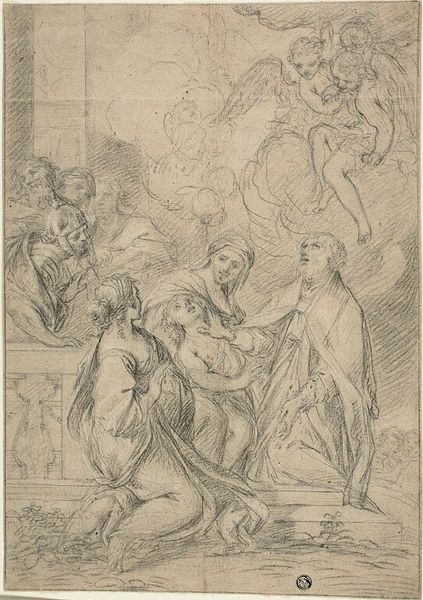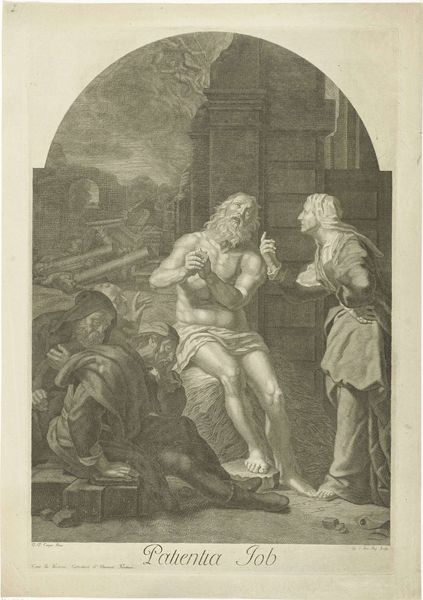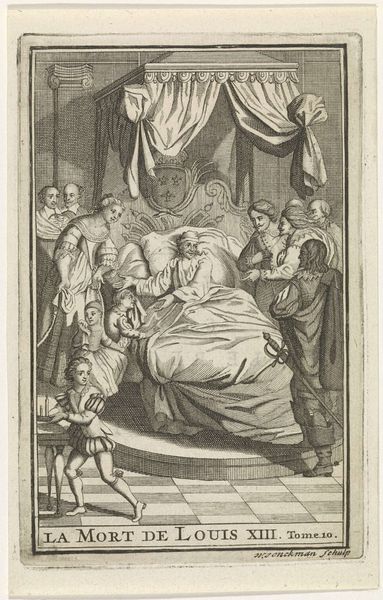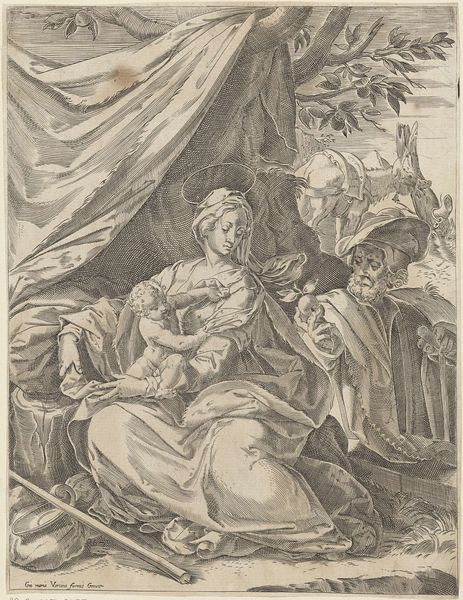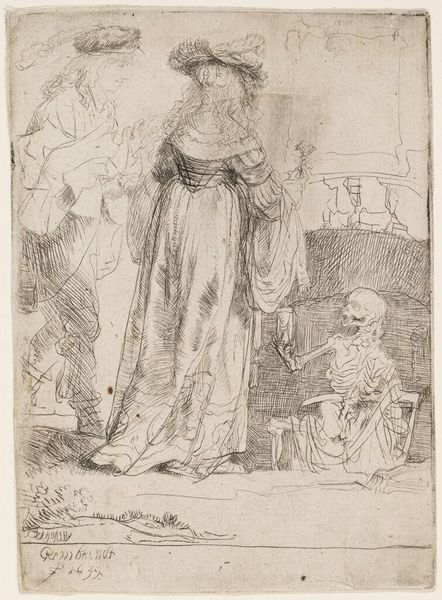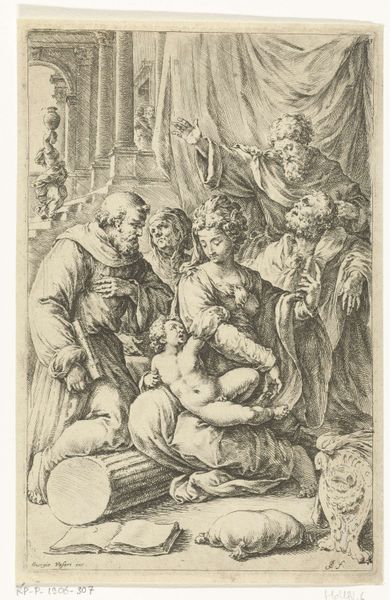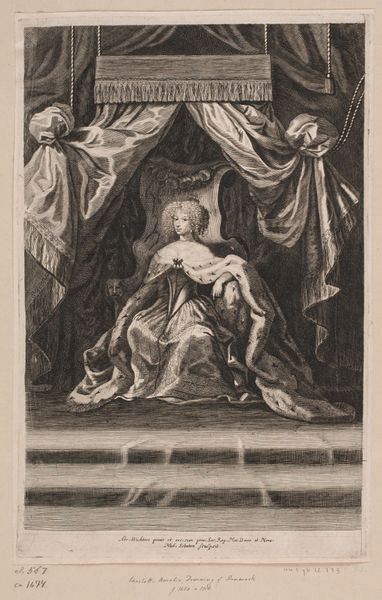
Portret van Karel II, koning van Spanje, staande in harnas, ten voeten uit 1700 - 1716
drawing, pencil, charcoal
portrait
drawing
baroque
charcoal drawing
figuration
pencil drawing
pencil
portrait drawing
charcoal
history-painting
academic-art
Dimensions: height 525 mm, width 395 mm
Copyright: Rijks Museum: Open Domain
Jan van Cleve III made this drawing of Charles II, King of Spain, sometime in the late 17th or early 18th century using pen and brown ink, brush in gray and brown, over graphite. The materials are traditional, but the composition echoes the kind of painted portraits that were being produced for the royal court. Here, the drawing is both preparatory and a kind of stand-in for the real thing. Note the incredible detail in Charles’ armor. This would have required highly skilled craftsmanship in the real object, with the metal painstakingly shaped and fitted. But in this image, all of that labor is translated into the meticulous work of the artist’s hand. Consider the contrast between the ephemeral nature of drawing and the enduring image of power that it’s meant to convey. The relative ease with which this image could be produced and circulated also speaks to the changing dynamics of representation in the early modern era. It suggests a shift towards more accessible forms of visual communication, challenging the traditional association of fine art with unique, costly objects.
Comments
No comments
Be the first to comment and join the conversation on the ultimate creative platform.
